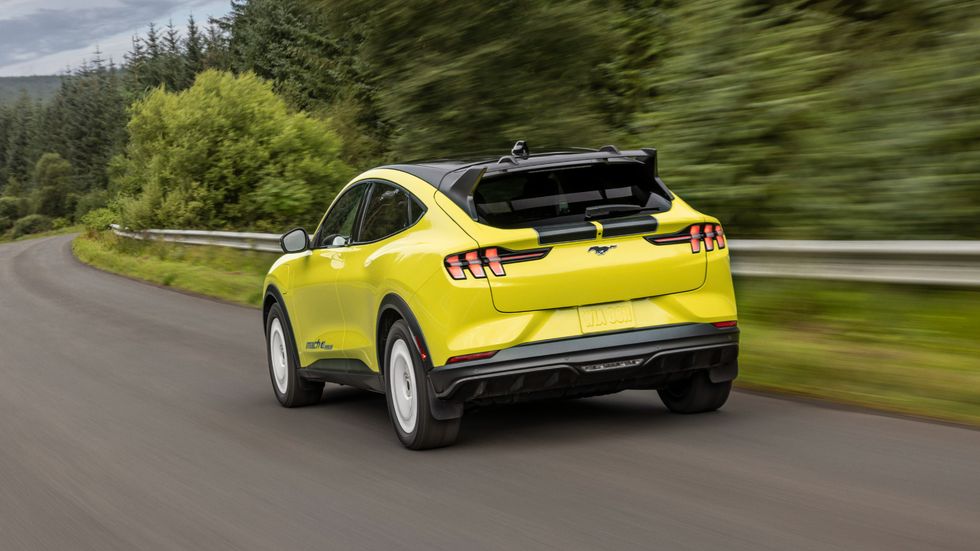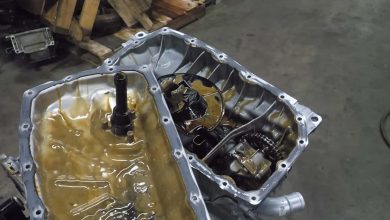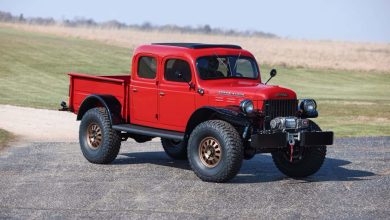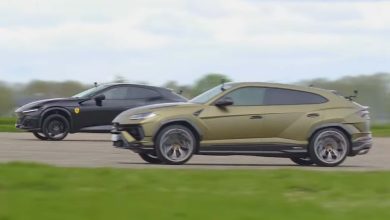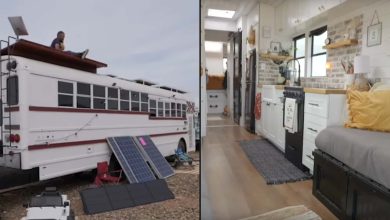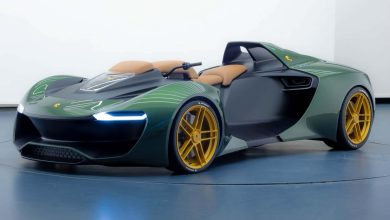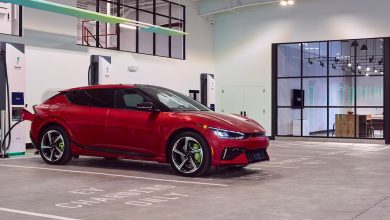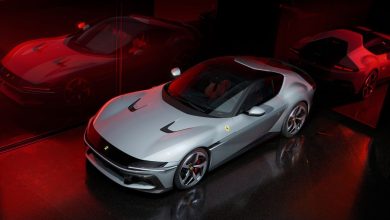Ford Pro Rolls with Commercial Work, While Model e Losses Mount
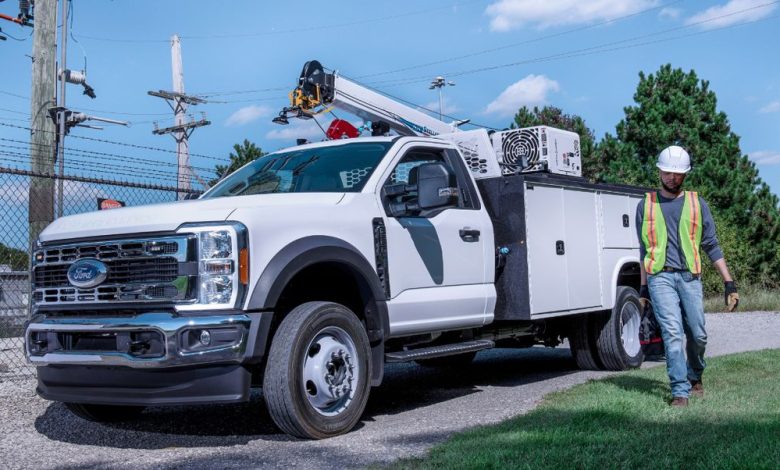
- Ford Blue, the division in charge of combustion-powered Mustang, trucks, SUVs, and Lincolns, earned $900 million before income taxes in the first quarter, hampered by the timing of its next-generation F-150.
- Ford Pro, which includes commercial trucks sold primarily for fleets in the US and Europe, posted a $3 billion EBIT for the quarter, a very healthy 36% increase year-over-year, with volume up 36%.
- Model e volume was down 20% year-over-year in the first quarter and revenue was down 84%, but the cost to build the Mustang Mach-E has been cut by $5,000 since its model year 2021 launch.
Ford Pro’s commercial truck and van business far out-earned its traditional ICE-powered Blue “legacy” unit in the first quarter of 2024, according to financial results released Wednesday.
In its earnings call with investors, CEO Jim Farley and CFO John Lawler also see opportunity in the entry-level commuter EV market now that Tesla apparently has abandoned plans for a $25,000 Model 2.
Ford Blue, the division in charge of combustion-powered Mustangs, trucks, SUVs, and Lincolns, earned $900 million before income taxes in the first quarter, hampered by the timing of its next-generation F-150.
Blue’s EBIT was down 13% and its volume fell 11% versus the first quarter of 2023. Ford says it made a “healthy profit outside North America.”
Farley said Ford is focusing on launches to improve on warranty costs and customer recalls. “We’re past the Super Duty launch now and well into the F-150 launch, and we’ve made a lot of changes to improve and bend that curve.”
Super Duty’s demand is twice the amount of its supply, he said.
Ford is giving engineers more time to test and validate new models, Farley said, which means they take longer to come to market, with the goal of higher initial quality and lower warranty costs.
The company’s “okay to buy” the new F-150 was delayed to six weeks, he said, and Ford “ended the quarter with 60,000 units in our plant stock,” which hurt sales of the long-time bestselling model in the US.
Ford Pro, which includes Transit and other trucks sold primarily in the US, UK, and Europe for commercial fleets and other professional use, posted a $3 billion EBIT for the quarter, a very healthy 36% increase year-over-year, with volume up 36%.
That first-quarter EBIT equals its full-year profit for 2022, Farley said. It was bolstered by “over 560,000 active software subscriptions for Pro customers,” up 40% over last year, and Pro’s “physical service” network, which added 700 commercial service bays in the last year.
Ford also added 11 new “very large service fleet centers” with 50 to 200 repair bays, each open 24 hours a day, seven days a week, plus more than 2,000 remote service trucks.
Farley said one-third of its sales are to small businesses, another third to large businesses, and about 20% to government fleets. He made it pretty clear that in the uncertain future automotive landscape Ford will be a commercial truck-builder first and foremost.
While its “legacy” Blue unit has probably a finite future, Farley said Ford is now third in hybrid sales behind Toyota and Honda in the US. Ford has ramped up hybrid capacity to 25% of F-150 production, Farley said.
“Our hybrid capacity is in trucks,” he said. “We don’t see a lot of competition for that business. A lot of our competitors will be starting from scratch.”
Ford is looking at adapting the HEV and PHEV powertrains to other models, he said without naming which ones. Because the Escape, Maverick, and F-150 include both transverse- and longitudinal-engine powertrains, this could include all other Ford and Lincoln ICE models.
“Some (internal-combustion engines) may have to go to the Atkinson cycle,” he said.
While Ford suffered softening EV sales like everyone else in the last year, there was a palpable feeling from the call with analysts that battery-electric remains the future of retail sales and that the executives feel a bit more at-ease about this after the recent easing of EPA compliance rules.
Model e volume was down 20% year-over-year in the first quarter and revenue was down 84% due to pricing pressure triggered mostly by Tesla. Ford lost $1.3 billion on Model e for the quarter, compared with a $700 million loss in Q1 of 2023.
The cost to build the Mustang Mach-E has been cut by $5,000 since its model year 2021 launch, “but the revenue is coming down faster than the costs,” CFO Lawler said.
Farley said Ford has pushed out launch of Model e’s three-row electric SUV, a Kia EV9 competitor, for the company’s second-generation EV platform.
He has said repeatedly that the second-generation platform is being designed to be profitable within 12 months of each model’s launch and will take advantage of easing costs and continuing advancements of battery materials.
He did not give any details of how long the three-row EV will be delayed, but one source indicates it is now set for a MY28 launch.
“We believe we can be profitable at $25,000 to $30,000 (MSRP),” Farley said. This is a major change in strategy from design of the Mustang Mach-E, which Ford intentionally took upmarket from its initial plans to offer a Chevrolet Bolt competitor.
Farley said cost efficiency will be the priority over ever-increasing battery range in the new models for the commuter market Model e will target, in which Tesla appears to have lost interest.
“That’s a big opportunity for Ford,” Farley said.
How do you think Ford is balancing its three business units, with the long game intended to focus on EVs? Please comment below.
As a kid growing up in Metro Milwaukee, Todd Lassa impressed childhood friends with his ability to identify cars on the street by year, make, and model. But when American automakers put an end to yearly sheetmetal changes, Lassa turned his attention toward underpowered British sports cars with built-in oil leaks. After a varied early journalism career, he joined Autoweek, then worked in Motor Trend’s and Automobile’s Detroit bureaus, before escaping for Mountain Maryland with his wife, three dogs, three sports cars (only one of them British), and three bicycles. Lassa is founding editor of thehustings.news, which has nothing to do with cars.
Read the full article here


